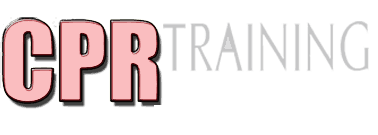Unstable angina is chest pain or discomfort that happens when there is an insufficiency in the amount of blood that reaches the heart. It has an irregular pattern, thus its onset is unpredictable. It can be differentiated from stable angina that has a usual pattern of severity and onset, such as strenuous activity, but can be relieve by taking medications. In contrast, unstable angina may occur even with the absence of strenuous activity and cannot be relieved by taking medications. It may occur recurrently and may increase its intensity as the condition becomes more frequent.
Unstable angina may be fatal and is considered a medical emergency. It is often indicative that a heart attack might happen soon. Unstable angina may also be referred to as acute coronary syndrome
Causes of Unstable Angina
The heart is one of the muscles of the body that works all the time, thus it needs a constant supply of blood rich in oxygen and nutrients all the time. As a result, when there is an insufficiency, angina occurs. The following conditions may lead to unstable angina:
- Plaque build up in the blood vessels of the heart, specifically the coronary arteries (atherosclerosis)
- Formation of blood clots in the blood vessels of the heart that may lead to partial or total blockage
- Coronary artery disease
- Blood disorders that lead to excessive blood clotting
Risk Factors for Unstable Angina
Although everyone is at risk for an unstable angina to happen, there are certain lifestyle factors and health or medical conditions that can increase an individual’s risk. Some of these risk factors include:
- Hypertension
- Low HDL and high LDL cholesterol
- Diabetes
- Lack of physical activity
- Obesity
- Smoking
- Age
- Gender – men are most likely to get unstable angina
- Family history of early coronary heart disease
Associated Symptoms of Unstable Angina
The symptoms of unstable angina may occur abruptly and can increase its intensity as the chest pains become more frequent. The following are the associated symptoms of unstable angina:

- Chest pain that may radiate to the neck, jaw, shoulder, arm, and back that usually disappears after 15-20 minutes
- Squeezing, tightening, aching, burning or crushing discomfort that may occur even without strenuous activity
- Dyspnea
- Sweating
- Hypotension
- Weakness
- Fatigue
- Not always relieved by taking medications
First Aid Management for Unstable Angina
If one experiences unstable angina, it is best to call for emergency medical assistance immediately as it can be fatal. It may be hard to differentiate when one is experiencing unstable angina or suffering from a heart attack. In cases of unstable angina, the following first aid tips are recommended:
- Call for paramedics.
- Assist the patient into a position of greatest comfort.
- Reassure the patient and keep him/ her calm. Assure him/ her that help is on the way.
- If the patient has medications for angina, assist them in taking the medications.
- Monitor the patient’s ABCs. Initiate CPR if necessary.
Unstable angina is a medical emergency. To learn how to handle emergencies, enrol in First Aid Courses and CPR Training. Unstable angina is defined as chest pain or discomfort that has no regular pattern and can increase in severity over time.
